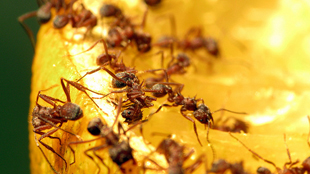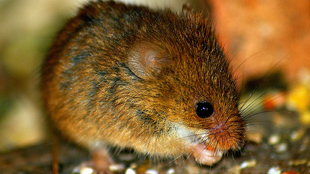 Naked-mole ratsFLICKR, BOB OWEN
Naked-mole ratsFLICKR, BOB OWEN
Cancer-free mole rat
Species: Naked-mole rat, Heterocephalus glaberGenome size: Estimated around 3 billion base pairsInteresting fact: Although it is not much bigger than a mouse, the naked-mole rat can live up to seven times longer, to around 30 years—making it the longest-lived rodent as well as an attractive animal model for the study of aging. It is also remarkably resistant to aging diseases such as cancer.
Naked Mole-Rat Genome Resource 2011

Complex potatoes
Species: Potato, Solanum tuberosumGenome size: 844 million base pairsInteresting fact: It may be one of the most common crops, but the potato has an incredibly complex genome consisting of about 39,000 protein coding genes (around 10,000 more than the human genome). Most potato varieties also carry four copies of every chromosome, with considerable differences between the four versions of each gene.

Farming ants
Species: Leaf-cutting ant, Acromyrmex echinatiorGenome size: Estimated between 311 and 335 million base pairsInteresting fact: Over 50 million years of evolution, highly-social Panamanian leaf-cutting ants have developed a symbiotic relationship with a fungus, which they farm in their nests and use to help break down their leafy meals.

Elusive mice
Species: Apomys aurorae, A. banahao, A. brownorum, A. magnus, A minganensis, A. sierrae, and A. zambalensisGenome size: N/AInteresting fact: While doing a genetic survey of small mammals in the mountains of Luzon Island in the Philippines, researchers discovered seven previously unknown species of forest mice belonging to the genus Apomys. In addition, a sequence comparison of the mitochondrial cytochrome b (Cyt-b) gene led the researchers to propose a new subgenus, called Megapomys, to classify four known mice species of that area.

More deadly E. coli
Species: German outbreak strain of E. coli O104:H4, seven related E. coli O104:H4 strains, and four E. coli reference strainsGenome size: 5.2 million base pairsInteresting fact: Although the E. coli strain responsible for the recent deadly outbreak in Germany had already been sequenced, Pacific Biosciences decided to sequence it again along with 11 other related and reference E. colistrains in the hopes of better understanding the genetics of its unusual virulence.



